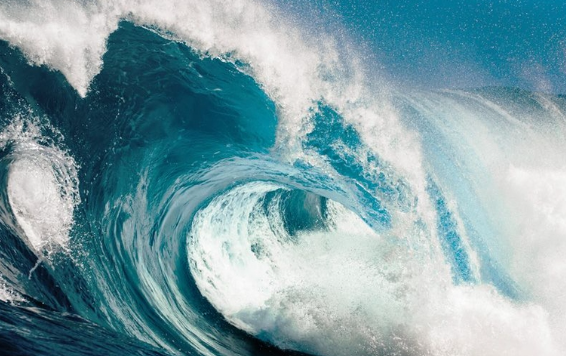What are Rogue Waves?
Rogue waves, much bigger than the waves around them, have historically been very dangerous to ships and structures. Mathematicians at the University of Maryland have recently made progress that led to the creation of an artificial intelligence (AI) model that can use data from 172 ocean buoys to predict these dangerous waves.
Understanding Rogue Waves
The World Meteorological Organization rates sea states from 0 (calm) to 9 (very high). Rogue waves are usually over twice as high as close waves. These strange events can happen when faraway waves come together or when ocean currents squeeze waves together, making the water dangerous for ships and people living near the coast.
Historical Impact
Before, rogue waves were unpredictable and dangerous, even though people knew they existed. From 2011 to 2018, they killed at least 386 people and sank 24 ships, which shows how important it is to have early warning systems.
AI Development Process
An AI program was taught by looking at 20-minute datasets from buoys and samples where rogue waves happened. The AI learned to find trends by comparing these to data of waves that weren’t rogue. It could predict rogue waves 75% of the time one minute before they happened and 73% of the time five minutes before.
Encouraging Results
The model’s ability to make predictions was tested at different ocean levels that weren’t in the original training dataset. This suggests that it could be used in more situations. Adding more environmental data, like wind speeds and water levels, could lead to improvements in the future. Researchers think that rogue wave predictions could become much more accurate if stronger AI methods and more data are added. Eventually, they think that this could lead to almost perfect forecasting. The study that showed these improvements came out in *Scientific Reports* on July 18.
About artificial intelligence
Origins and Early Development of AI: Artificial Intelligence (AI) began with the 1956 Dartmouth Conference, where the term “AI” was coined by John McCarthy. Early AI systems relied on rule-based programming rather than learning algorithms, focusing on predefined rules and logic. The Turing Test, proposed by Alan Turing in 1950, aimed to assess a machine’s ability to exhibit human-like behavior.
Evolution and Impact of AI Technologies: The AI field has seen significant advancements and applications, including healthcare diagnostics and autonomous vehicles. Despite periods of reduced funding and interest, known as AI winters, notably in the 1970s and 1980s, machine learning emerged in the 1990s, revolutionizing AI capabilities. Neural networks, designed to mimic human brain function, have further propelled AI’s development.
Month: Current Affairs - July, 2024
Category: Science & Technology Current Affairs








